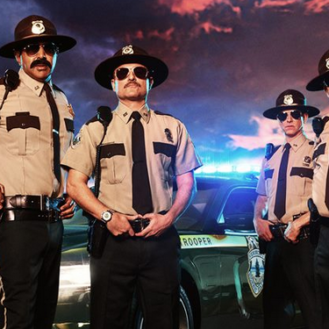You’ve heard of a movie “spinning its wheels”, but have you seen a movie that is simply “spinning”? That’s what Orson Welles’ recently recovered The Other Side of the Wind makes its audience feel like – it’s an evening on a sociable, abrasive lazy suzy with Hollywood elites admiring each other just as often as they’re jumping at another’s throat.
The Other Side of the Wind is, of course, Welles’ infamous lost labour of love, which had a six-year off-and-on production riddled with financial and legal troubles. The legendary director passed away before completing the picture, which was semi-edited but ultimately incomplete. But finally, after 40 years of anticipation, modern streaming giant Netflix picked up distribution and is making the film (now in a finished condition) accessible to at-home viewers with an additional yet limited theatrical presentation (They’ll Love Me When I’m Dead, a documentary directed by Morgan Neville [The Music of Strangers] about the making-of, will also be made available for Netflix subscribers).
The experimental finished film is, I imagine, autobiographical to Welles’ own struggles as a filmmaker returning from exile, but I also feel like the film is prophetic. The film takes place at a birthday party for formally revered director Jake Hannaford (John Huston) where a screening of his latest film, a seemingly smutty piece titled ‘The Other Side of the Wind’, will play for friends, colleagues, and journalists. Using a method that has been now branded as “mockumentary”, Welles’ movie is shot from the perspective of the film cameras that are in attendance at Hanford’s estate. The slew of lenses is so outrageous that camera operators often fall into frame, along with microphones and lighting equipment. It’s all on purpose since Welles cuts around the disorienting party using these different angles to build tension and satirize the gluttony of excess. While unhinged, this was a highly effective way for Welles to present his story about the death of significance as high rollers face their own demons.
I expect viewers will be stunned by The Other Side of the Wind; either because the film was ahead of its time or the jumpy narrative will drive them to take frequent breaks in order to pull themselves together. Film aficionados may just be floored that this movie is even seeing the light of day, and they’ll consume it as a cinematic artifact – that’s how I admired it, at least. Admittedly, I don’t know a lot about Orson Welles, but I do know that The Other Side of the Wind is special. Stilted and subjective, but special nonetheless.
**********
Do You Tweet? Follow These Tweeple:
Addison Wylie: @AddisonWylie





Be the first to comment